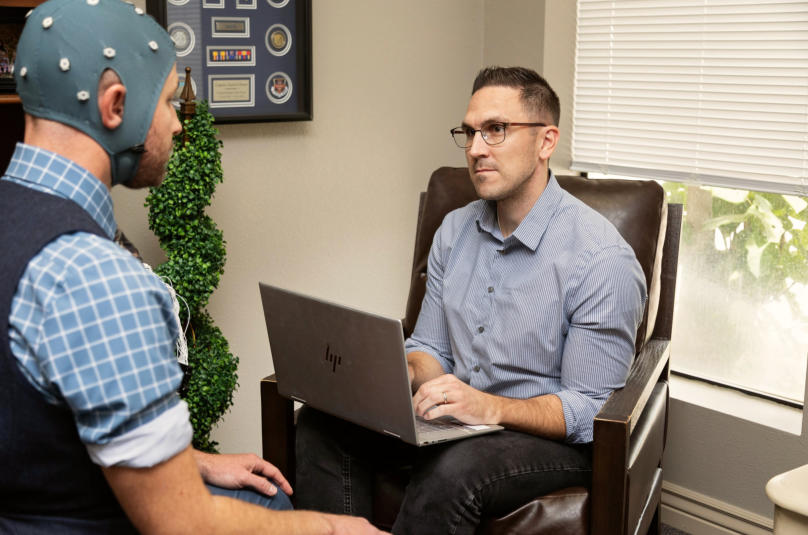Focused on results, not return visits.
Start the fight for your freedom.
What is Neurofeedback?
Neurofeedback allows patients and clients to improve their concentration, develop their
ability to “relax the mind,” and strengthen their overall neurological functioning. When
there is a brain injury the system becomes dysregulated, or in other words,
the brain becomes stuck in specific brainwave patterns. Retraining the brain can
improve many conditions and the various symptoms of stroke/aneurysm, brain
surgery, concussion, anxiety, sleep problems, PTSD, Parkinson’s Disease, and
movement disorders, such as myoclonic. If we relate biofeedback to a sprint (in how
quickly gains are acquired), neurofeedback might be related more toward a marathon,
making patience and persistence an important element in the approach to treatments.
Neurofeedback can be compared to exercising your brain, like a muscle,
which takes time; however, improvements remain and are lasting with rewards of
increased neurological functioning.
Neurofeedback is able to assess brain function and indicate areas where it is not
functioning properly. It can also locate neural dysregulation of the various neural hubs,
as seen in a concussion and PTSD. Neurofeedback looks for the cause, such as what
specific pathways are dysregulated or over or under activated. Once this type of
assessment locates the cause of the symptom, then a wide variety of methods and
equipment can be chosen based on what is the best one specifically for your needs and
neurological issues.
How does it work?

Neurofeedback



All forms of biofeedback employ some type of
computer or monitoring device along with
electronic sensors to give information about
what is going on in the body. Just like any
other muscle in the body, the brain has the
ability to repair itself, also known as
neuroplasticity. In order stay physically fit, you
would exercise to strengthen your muscles.
Similar to this idea, neurofeedback training
helps you get mentally fit.
Neurofeedback assesses brain function through
the use of non-intrusive sensors placed in
various locations on the scalp. These sensors
measure the electrical activity of the brain. An
individual plays a specialized video game, the
objective being to operate the game by
controlling specific brain wave activity. Over
several sessions, as the individual retrains his
brain activity, he increases his skill level,
thereby controlling his brain
activity. This exercise strengthens the brain
and the rest of the nervous system, with
powerful effects on the entire body.
Psychology &
Anxiety Clinic
GPS











